TRANSCENDING BOUNDARIES

RESEARCH IMPACT REPORT

RESEARCH IMPACT REPORT C USC MANN SCHOOL 1 MESSAGE FROM THE DEAN AND ASSOCIATE DEAN FOR RESEARCH 2 BY THE NUMBERS 4 ACCELERATING INNOVATION AND NEW KNOWLEDGE 6 TARGETING THERAPIES 10 FUELING SUSTAINABILITY 12 HARNESSING BIG DATA AND LEVERAGING TECHNOLOGY 16 COUNTERING COVID-19 20 FOSTERING HEALTH EQUITY 24 PROTECTING PATIENTS 28 FACILITATING DISCOVERY 30 COLLABORATING FOR GREATER IMPACT 34 TRAINING THE NEXT GENERATION 40 DISSEMINATING RESEARCH INSIGHTS 42 SUPPORTING OUR WORK
Message from the Dean and Associate Dean for Research Affairs
The USC Mann School of Pharmacy and Pharmaceutical Sciences is dedicated to improving human health in our immediate neighborhood and in communities around the world. This drive has remained at the heart of the school’s mission since our founding in 1905.
The school’s four departments—Titus Family Department of Clinical Pharmacy, Pharmacology and Pharmaceutical Sciences, Pharmaceutical and Health Economics, and Regulatory and Quality Sciences—provide a singular and dynamic environment for laboratory discovery, translational breakthroughs, clinical applications, policy solutions and regulatory innovation. Our research extends from basic discovery to experimental therapeutics—and from clinical trials to implementation and analysis of impact. By covering the entire spectrum of pharmaceutical discovery and health application, we strive not only to answer essential scientific questions but also to ensure that the resulting breakthroughs reach those who need them quickly, safely and equitably.
Collaboration is central to everything we do. Our centers, institutes and partnerships—
within USC, across Los Angeles and around the world—deepen and widen the impact of our research. We also are committed to preparing and mentoring new generations of talent and leadership, from building a pipeline of future scientists and researchers—including underserved high schoolers and even younger students—to mentoring and supporting postdoctoral investigators and junior faculty.
In this report, we showcase just a few of our faculty’s latest impactful scholarly endeavors, share highlights of some of the dynamic work being done in our research centers, feature some up-and-coming recent graduates and current students, provide an overview of our training programs and core facilities, and express our gratitude to the supporters who help sustain and expand our research portfolio.
We look forward to furthering our quest to improve the human condition and continuing to partner with and disseminate our results to researchers and institutions that share our vision of transforming health.
Vassilios Papadopoulos, DPharm, PhD, DSc (hon)

Dean, USC Mann School of Pharmacy and Pharmaceutical Sciences
John Stauffer Decanal Chair in Pharmaceutical Sciences
The retina’s specialized photoreceptors— elongated rods, in flower-like shapes, and cone-tipped cells—pass visual signals through the optic nerve to the brain. Researchers at the Center for Neuronal Longevity explore new therapies that use cutting-edge technologies to unravel the workings of the eye and brain.

Annie Wong-Beringer, PharmD
Associate Dean for Research Affairs, USC Mann School of Pharmacy and Pharmaceutical Sciences

RESEARCH IMPACT REPORT 1 USC MANN SCHOOL
Annie Wong-Beringer
Vassilios Papadopoulos
BY THE NUMBERS
PRIVATE PHARMACY SCHOOL (AS RANKED BY U.S. NEWS & WORLD REPORT)

MOST INNOVATIVE UNIVERSITY IN THE WORLD, PER REUTERS RANKING, CITING RESEARCH FROM THE MANN SCHOOL
PHARMACIES OWNED AND OPERATED BY THE SCHOOL (INCLUDING NEW SOUTH L.A. PHARMACY COMING IN 2024), PROVIDING AN UNPRECEDENTED OPPORTUNITY FOR TRANSLATING DISCOVERY INTO CLINICAL IMPLEMENTATION
LICENSED PATENTS (AS OF JANUARY 2023) 5
OF THE SCHOOL’S FACULTY MEMBERS ARE AMONG THE TOP 2% OF THE WORLD’S MOST-CITED SCIENTISTS: ENRIQUE CADENAS, DANA GOLDMAN, JOEL HAY, J. ANDREW MACKAY, DARIUS LAKDAWALLA, WILLIAM PADULA, VASSILIOS PAPADOPOULOS, DIMA QATO, WEI-CHIANG SHEN, JEAN CHEN SHIH.
OUR RESEARCHERS COLLABORATE WITH ANOTHER 15 USC FACULTY MEMBERS ON THE LIST.
39
NO. 1 8TH
10
RESEARCH IMPACT REPORT 2 USC MANN SCHOOL
2018 $ 4,440,219
*reporting cycle runs from October 1, 2021–September 30, 2022
$ 7,470,447
GRANTS BY CATEGORY FY22
GRANT FUNDING SNAPSHOT $ 9.6 MILLION
TOTAL RESEARCH BUDGET FY23
150+ $ 7.5 MILLION
PAPERS PUBLISHED IN PEER-REVIEWED PUBLICATIONS BY MANN SCHOOL FACULTY IN FY22

38.5%
IN RESEARCH GRANTS AWARDED IN FY22
GRANT-APPLICATION SUCCESS RATE (2018–22)
2022*
$
INDUSTRY $
FOUNDATION $
OTHER $
FEDERAL
4,619,865
1,145,518
1,300,759
404,305
RESEARCH IMPACT REPORT 3 USC MANN SCHOOL
ADVANCING INNOVATION AND NEW KNOWLEDGE
In the USC Mann School’s laboratories, faculty and students continuously expand our understanding of the mechanisms of disease development and progression as they uncover breakthroughs to cure and treat a host of maladies. From cancer and infectious diseases to autoimmune and cardiovascular conditions, and from neurodegeneration to substance use, our researchers produce groundbreaking advances. Our clinical pharmacists are establishing new models of medication management and care that are transforming lives and improving patient outcomes. Our health economists and regulatory experts are generating evidence-based solutions that aim to inform policy, speed innovation and reduce disparities.
The school’s research enterprise has been rewarded with significant grants from the National Institutes of Health (NIH), National Science Foundation, Department of Defense, and other government agencies and philanthropic foundations, as well as contracts from the pharmaceutical industry that support the school’s collaborative approaches.

Following are some recent highlights of research conducted by our dynamic faculty.
FEDERALLY FUNDED PROJECTS SPANNING TOPICS SUCH AS DRUG DISCOVERY, mRNAs, ALZHEIMER’S DISEASE, MEDICARE PART D, AGING AND HEALTH DISPARITIES
FULL-TIME FACULTY
RESEARCH IMPACT REPORT 4 USC MANN SCHOOL
87
100+
National Academies
Participation
Dana Goldman , National Academy of Medicine
Vassilios Papadopoulos , National Academies of Medicine and Pharmacy (France)
Leonard Schaeffer , National Academy of Medicine
National Academy of Inventors, USC Chapter
Liana Asatryan
Daryl Davies
Stan Louie
J. Andrew MacKay
Vassilios Papadopoulos
Frances Richmond
Wei-Chiang Shen
Jean Chen Shih
Yong (Tiger) Zhang
NIH MERIT Award
Jean Chen Shih (two-time recipient)
National Committee Participation
Darius Lakdawalla
“Addressing Sickle Cell Disease: A Strategic Plan and Blueprint for Action,” National Academies of Sciences, Engineering and Medicine
Dima Qato
“Action Collaborative on Countering the U.S. Opioid Epidemic,”

National Academy of Medicine
“Implementing High-Quality Primary Care: Rebuilding the Foundation of Health Care,” National Academy of Sciences, Engineering and Medicine (participation as a National Academy of Medicine Pharmacy Fellow)
National Order of Merit (France)
Enrique Cadenas
RESEARCH IMPACT REPORT 5 USC MANN SCHOOL
TARGETING THERAPIES
From breakthrough insights to more effective treatments
Pinpointing Disease With Exosomes
The exosomes secreted by cells used to be considered nothing more than the body’s garbage haulers, but Yong (Tiger) Zhang is using them to generate innovative and targeted therapies. His research fuses chemistry with biology to explore protein post-translational modifications—which are essential to biological function—to discover new therapeutic targets for cancer, neurodegenerative diseases and immune disorders. He is also engineering antibodies to more precisely treat these conditions as well as infectious diseases.
“We want to understand the fundamentals of biological systems using the chemical approach,” Zhang says. “Through this, we are inventing new chemicals and synthetic molecules that can potentially be used to improve human health.”
Zhang’s funding awards include a four-year, $2 million+ R01 NIH grant to reprogram
Light micrograph of blood cells from bone marrow in acute myeloid leukemia (AML). USC Mann research aims to identify new therapies to benefit AML patients.

RESEARCH IMPACT REPORT 6 USC MANN SCHOOL
exosomes for biomedical applications, and a five-year, $1.9 million NIH General Medical Sciences grant to advance understanding of complex ADP-ribosylation processes.
Attacking Acute Myeloid Leukemia
The current survival rate for patients with acute myeloid leukemia (AML) is less than 30%—and the outcomes for older people are significantly worse. Houda Alachkar uses genomics to expand knowledge about blood cancers and identify new therapeutic strategies to extend and improve the lives of afflicted patients. Her research includes profiling the immune system’s T cell receptor repertoire to find ways of using them to fight AML. She is also developing innovative therapeutic strategies for targeting CD99 and FLT3, which are receptors highly expressed in AML.

“Being in the Mann School allows me to work with biochemists, pharmaceutical scientists and bioengineers,” says Alachkar, whose collaborators at the school include Ian Haworth, Tiger Zhang, J. Andrew MacKay, Jean Chen Shih and Serghei Mangul, along with faculty at the USC Norris Comprehensive Cancer Center. Recent funding awarded to support her work includes a five-year, $1.79 million grant from the NIH. “Partnering with clinicians at the USC Norris Comprehensive Cancer Center helps us validate our findings with patient cohorts and bring ideas from patients to study in the lab,” she says. “The interaction with clinicians, hematologists and oncologists is vital.”
Identifying Novel Treatments for Alcohol Use Disorders
Daryl Davies’ research revolves around the development of novel treatments for alcohol
use disorders (AUDs), which rank third on the list of preventable causes of morbidity and mortality in the United States. The economic burden to society for AUDs is in excess of $220 billion annually. To date, pharmacotherapies, even in conjunction with psychosocial strategies, have had limited success in treating AUDs—with approximately 70% of patients relapsing into heavy drinking within one year. Therefore, the development of new treatments for AUDs represents an important unmet medical need.
In response to this challenge, Davies and his team focus on identifying molecular targets of alcohol action in the central nervous system. Recent findings from this work have resulted in specific targets for which therapeutic compounds have been designed and are currently under investigation. This multidisciplinary endeavor brings together a diverse and complementary group of scientists with behavioral, pharmacological, electrophysiological, molecular, genetic, computational and medicinal chemistry expertise. Davies is
Julio Camarero the John A. Biles Professor in Pharmaceutical Sciences, won one of the first NIH “big idea” awards. He recently earned a new patent for a novel cyclotide for potential use in treating cancer and heart attack.
the Timothy M. Chan Professor of Complementary Therapeutics and director of the Alcohol and Brain Research Laboratory at USC.


Decoding and Targeting RNA Viruses
RNA viruses include coronaviruses, Zika, HIV, Ebola and many other causes of devastating disease. Zhipeng Lu devises technologies to explore the structures and functions of RNA molecules to understand the processes driving such conditions. These efforts are unveiling new knowledge about geneexpression regulation in cells and host-virus interactions. Lu’s findings are opening up

30%
CURRENT SURVIVAL RATE FOR PATIENTS WITH ACUTE MYELOID LEUKEMIA
RESEARCH IMPACT REPORT 7 USC MANN SCHOOL
Houda Alachkar
Tiger Zhang
Zhipeng Lu Bangyan L. Stiles
new directions in drug discovery to foster RNA-targeting therapeutics that will more effectively treat viral infections, genetic disorders, cancers and other serious conditions. His research awards include a five-year, $2 million+ R35 grant from the National Institute of General Medical Sciences to develop new chemical and computational tools to study RNA structures.
Combating Fatty Liver Disease
Bangyan L. Stiles is exploring the role played by the estrogen-related receptor ERRa in fatty liver disease and liver cancer. ERRa is crucial to metabolic regulation, and Stiles seeks to define the precise molecules it controls to adjust the liver’s lipid, or fat, levels. She garnered a four-year, $1.4 million grant from the NIH for research that could lead to new therapeutic targets. The research builds on her previous discovery that inhibiting ERRa in mouse models successfully blocks the fat accumulation that leads to nonalcoholic steatohepatitis, an aggressive form of nonalcoholic fatty liver disease that heightens cancer risk. Obesity is a national epidemic known to increase the chances of liver cancer in individuals with a high body mass index.
Restoring Harmony to Steroid Hormones
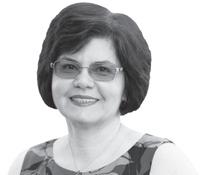
Steroid hormones are critical to bodily functions from metabolism to sexual reproduction, and disruptions to their activity can cause serious diseases and infertility. Dean Vassilios Papadopoulos’ research focuses on disorders related to altered steroid hormone synthesis to address such disorders. Working with colleagues, including Martine Culty, Papadopoulos was the first to grow human, testosterone-producing Leydig cells in the lab. He also developed new molecules that
induce testosterone production by dysfunctional Leydig cells. These breakthroughs pave the way for the development of novel therapeutics and potentially enabling a patient’s own stem cells to not only improve fertility and erectile dysfunction but also reduce the dangers of comorbidities linked to testosterone deficiency, such as loss of muscle mass, osteoporosis, obesity, liver disease, metabolic syndrome and cardiovascular diseases.
“Our work over the years on the mechanism underlying steroid hormone production has led to identifying the molecular bases of diseases in which steroids play a determining role, as well as the development of drugs to treat and diagnostics to monitor these diseases,” Papadopoulos says.
He has also defined the mechanisms that control the mitochondrial functions critical for bile acid formation in the liver. He is currently testing certain chemicals in mitochondrial proteins to assess their effectiveness as therapeutic targets for suppressing or delaying nonalcoholic fatty liver disease, cases of which are rising worldwide.



Targeting the Microbiome
Liana Asatryan investigates the mechanisms underlying alcohol use and neurodegenerative disorders with the goal of developing novel therapeutic strategies. Using mouse models, she is exploring the links between changes in gut microbiota, their metabolites, and the alcohol-induced processes of inflammation in the brain and liver. Understanding these causal associations opens avenues to new therapies for targeting the microbiome to more effectively treat alcohol use disorders and related organ dysfunction.
Preventing Cardiovascular Disease
Pharmacists play a pivotal role in the prevention of cardiovascular disease, notes Tien Ng, a cardiology specialist and interim chair of the Titus Family Department of Clinical Pharmacy. Pharmacists have the training to help patients modify risk factors through education on lifestyle and diet and to reduce the risk of disease progression through medication optimization. As the healthcare provider of first contact for many, pharmacists can also provide the personal support and positive reinforcement that some individuals need to get kick-started on the path toward improved health, Ng says. His research includes comparing drug therapies used to manage patients hospitalized with heart failure as well as addressing methamphetamine-associated cardiomyopathy.
The school’s faculty members have long been recognized for their groundbreaking contributions— from University Professor Jean Chen Shih ’s influential work illuminating how the brain enzyme monoamine oxidase (MAO) affects behavior to Enrique Cadenas ’ study of the molecular mechanisms inherent in brain aging and Alzheimer’s disease. Shih is the Boyd and Elsie Welin Professor, and Cadenas holds the Charles Krown/Alumni Professor of Pharmacology and Pharmaceutical Sciences.
RESEARCH IMPACT REPORT 8 USC MANN SCHOOL
Liana Asatryan
Tien Ng
Enrique Cadenas
Julio Camarero
Delivering New Cancer and Diabetes Therapies
With a focus on cancer and diabetes, Jennica Zaro develops nanoparticle protein-delivery platforms for directing novel therapies to specific sites in the body. Her research works to improve the effectiveness of treatments by enriching their concentration against disease while avoiding healthy cells to minimize side effects. Zaro is currently exploring the effectiveness of proinsulin-transferrin as a liver-specific drug that can bring glycemic control to near-normal levels in diabetes patients. She is also testing the ability of pH-sensitive nanoconstructs of cell-penetrating peptides to selectively deliver drugs to tumor cells and infection sites that exhibit mildly acidic microenvironments—a feature commonly associated with therapy resistance.
BILLION
70%
OF PATIENTS RELAPSE INTO HEAVY DRINKING AFTER PHARMACOTHERAPIES AND PSYCHOSOCIAL
Exploring Epithelial Cellular Function
The epithelial cells lining our organs and blood vessels not only protect our bodies but also enable a range of vital functions— from absorption, filtration and secretion to sensory reception. Curtis T. Okamoto applies bioinformatics to investigate how these cells determine where to put the newly synthesized membrane proteins that are so vital to establishing and maintaining cellular and organ function. This work is unlocking knowledge about what makes us healthy and what drives disease.
Easing Inflammation to Promote Healing
Although essential to the body’s healing process, inflammation can lead to neurodegeneration, cancer, eye disorders, diabetes
“I’m developing compounds to stop the cause of blindness, and we have three agents in either preclinical or late clinical trials or in human studies. One of the drugs, applied topically, can repair the eye without causing fibrosis—something no other drug has been shown to do.”
Stan Louie
and other diseases. Stan Louie, director of the Clinical Experimental Therapeutics Program, is expanding knowledge about inflammation to develop treatments to ameliorate and even prevent the progression of such diseases. He has developed four therapeutic platforms, including a compound that could potentially stop retinitis pigmentosa and autoimmune diseases such as systemic lupus erythematosus. His work with the USC Center for Neuronal Longevity explores the potential of transepithelial electrical stimulation to treat retinal degeneration and Alzheimer’s disease. Louie’s funding awards include a $1.6+ million grant from the U.S. Department of Defense to test the effectiveness of an eyedrop formulation—NorLeu3Angiotensin (1–7)—in healing severe eye injuries.
RESEARCH IMPACT REPORT 9 USC MANN SCHOOL
$
220+
STRATEGIES
ECONOMIC BURDEN FROM ALCOHOL USE DISORDERS
FUELING SUSTAINABILITY
From protecting the ocean to reducing environmental harm to humans
Transforming Plastic Waste
Up to 10 million metric tons of plastic end up in our oceans each year and, since the substance does not naturally degrade on a reasonable timescale, its accumulation may outweigh all the fish in the sea by 2050. To address this urgent challenge, Clay C. C. Wang, chair of the Department of Pharmacology and Pharmaceutical Sciences, and collaborators have devised an innovative method for transforming plastic trash into a variety of useful products—including pharmaceuticals—with unprecedented efficiency. So far, the team has accomplished this on two major types of plastics that have extremely poor recycling rates—polyethylene and polystyrene.
To test the process, Wang’s team recruited student and community groups to collect samples of plastic waste from Catalina Island. The researchers converted these samples into diacids and benzoic acid, which they then fed to strains of Aspergillus nidulans, an easy-to-engineer fungus often employed in drug discovery. The fungus responded by producing high quantities of compounds
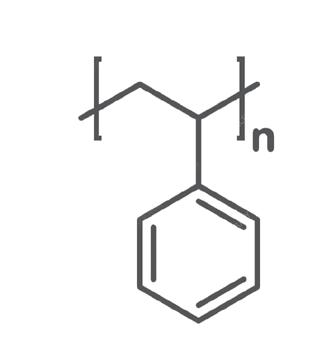
Clay Wang and collaborators have devised a new process to turn plastic trash into pharmaceuticals with unprecedented efficiency and cost-effectiveness.

RESEARCH IMPACT REPORT 10 USC MANN SCHOOL
MASS OF POLYMER THE TEAM WAS ABLE TO RECOVER AS DISCRETE, USEFUL PRODUCTS, COMPARED WITH THE EPA’S ESTIMATE THAT 30% IS TYPICALLY RECOVERABLE
with antimicrobial, anticancer, antioxidant and neuroprotective properties—all within a week. Furthermore, they converted these plastic-breakdown products into a biocontrol agent that is used agriculturally to naturally counteract the accumulation of highly carcinogenic compounds in crops.
To expand the scope of this research, the team is now working on creating dyes, proteins and other valuable products from even more types of plastics.
Enhancing Male Reproductive Health

Environmental factors play a major role in the rise of reproductive disorders, which verge on threatening fertility worldwide. Martine Culty investigates the impact of exposing fetuses and newborn males to chemicals that not only harm reproductive health but also increase testicular cancer risk. She and colleagues are investigating how perinatal exposure to endocrine disruptor chemicals, which exist in many household products, affects male reproductivity. A major goal is to help pregnant women avoid exposure to these damaging substances.
Culty’s studies have identified genes and pathways that are disrupted by the mixture of two common environmental chemicals with the over-the-counter painkillers acetaminophen and ibuprofen. Her USC collaborations include working with Dean Vassilios Papadopoulos to improve testosterone production and androgen formation, and Lynda Kay McGinnis of the USC Norris Comprehensive Cancer Center on how treating women with tamoxifen for breast cancer affects the reproductive development of their infant sons.

RESEARCH IMPACT REPORT 11 USC MANN SCHOOL
Clay C. C. Wang
83%
Martine Culty
1.1 BILLION
Sustainability research is a top priority at USC Mann. Our faculty are building transdisciplinary collaborations with colleagues across USC, applying their research in innovative new areas to make a tangible environmental impact.”
Dean Vassilios Papadopoulos
TONS OF PLASTICS ESTIMATED TO BE PRODUCED GLOBALLY
BY 2040
HARNESSING BIG DATA AND LEVERAGING TECHNOLOGY

From artificial intelligence and microsimulation to closing the digital divide
Imaging Alzheimer’s
No cure exists for Alzheimer’s disease, and the only available therapies aim at just its symptoms. Paul Seidler leverages recent advances in imaging and computer processing to more accurately test drugs with the potential of being affordable and effective in not only attacking Alzheimer’s effects but also the disease itself. Through these technologies, he and his team observe how therapeutic candidates engage with pathologically clumped proteins drawn from Alzheimer’s patients. This enables Seidler’s lab to refine therapies and maximize their potential in advance of human clinical trials. To attack Alzheimer’s on all fronts, Seidler
Computer illustration of neural network. Long-term effects of anxiety can include the cognitive decline of Alzheimer’s and other dementia disorders. New research from the USC Mann School uses new technologies in imaging and computer processing to shed light on the issue and help protect the brain.

RESEARCH IMPACT REPORT 12 USC MANN SCHOOL
partners with the Mann School laboratories of Clay C. C. Wang and Daryl Davies to discover natural product-based approaches. He also works with UCLA collaborators to synthesize compounds and nanoparticles based on his high-resolution imaging studies.

Improving Sepsis Outcomes With Precision


Despite the availability of antibiotics and medical advances, sepsis remains a leading cause of death. Annie Wong-Beringer, associate dean for research affairs, applies an interdisciplinary and translational approach to her research to improve outcomes of patients with infections, including sepsis caused by Staphylococcus aureus, a skin bacterium we all have on our bodies—but one that is a major cause of a potentially deadly bloodstream infection. She is using clinical data from more than 1,000 sepsis patients along with the microbiological

RESEARCH IMPACT REPORT 13 USC MANN SCHOOL
The USC Titus Center for Medication Safety and Population Health provides training in healthcare data science, machine learning and artificial intelligence in medication safety.
Annie Wong-Beringer
Paul Seidler
Daryl Davies
bioinformatics
of collecting and analyzing complex biological data such as genetic codes
characteristics of the infecting bacterium to develop an artificial intelligence algorithm to help clinicians prescribe precision therapeutics that could save more lives from these dangerous infections.
“One out of three people with bloodstream infection caused by the bacterium Staphylococcus will continue to grow the bacterium in the blood, which is problematic because it not only gets seeded into other organs, but such patients also have a much higher likelihood of death,” Wong-Beringer notes. “By better understanding the biomarkers of host and pathogen interaction most predictive of outcome, we can improve how we identify at-risk patients and direct treatment with precision for each individual patient.”
Closing the Omics Divide


Rapid advances in omics technologies have created unprecedented amounts of biological data—along with an increased dependence on computational analysis to properly harness this information for medical research.
Serghei Mangul applies his bioinformatics expertise to help close the digital divide between biomedical researchers’ lack of
computational expertise and the rising importance of reproducible data science. In addition to teaching computational techniques to life sciences and medical researchers, Mangul devises ways of accelerating the accurate applications of genomics and biomedical data to translational research and education. His team is also currently developing robust yet easy-to-use open-source software to study adaptive immune repertoires across diverse populations.
Investigating Policy Consequences

For more than a decade, the USC Schaeffer Center has been at the forefront of developing pioneering economic demographic microsimulation tools to effectively model future trends in health and longevity and answer salient questions in health policy. The centerpiece effort is the Future Elderly Model (FEM), which projects a rich set of health and economic outcomes for the U.S. population age 50 and older. The Schaeffer Center is building a network of global collaborators to develop country-level, FEM-based models in nations around the world, an effort that will allow researchers to compare demographic, health and economic trends on a global
scale. This project is especially important since the number of individuals age 65 and over is projected to double by 2050.
Researchers recently used the FEM to forecast long-term trends in disease dynamics from 20 countries. Focusing on investigating the consequences of policy and behavioral factors in healthy aging—including trends in chronic disease and education, and behavioral factors like smoking—the researchers produced forecasting models that can be used by policymakers and stakeholders in deciding where to most effectively deploy resources. Models have also gone local, with simulations conducted for California and Los Angeles County to help policymakers at the state and county levels understand trends and the impact of policy decisions.
Predicting Molecular Associations
Ian Haworth develops computational methods for predicting molecular associations to enhance our understanding of biochemical and pharmacological mechanisms. His laboratory’s advances include improving solvation methods to make them more widely applicable for clinical research. He also leads research aimed at expanding the use of artificial intelligence for more sophisticated analyses of data from computational predictions. Haworth’s methodologies enable a deeper understanding of the molecular events underlying drug design and delivery. His collaborations span structural biology, immunology and computer sciences, and students are partners in all of his projects. This includes recruiting science-oriented PharmD students for his laboratory team.
RESEARCH IMPACT REPORT 14 USC MANN SCHOOL
the science
Serghei Mangul
Ian Haworth
Maryann Wu
Valuing Care
Rising healthcare expenses mean that economists have an increasingly important role to play in advancing cost-effective care. Yet economic models overwhelmingly fail to predict the value people place on treating dangerous or rare diseases. Darius Lakdawalla, the Quintiles Chair in Pharmaceutical and Regulatory Innovation, focuses on identifying why economic theory mischaracterizes the value of treating severe illness and on finding solutions that promote valuebased care. With a colleague, he devised the revolutionary Generalized Risk-Adjusted Cost-Effectiveness (GRACE) approach, which seeks to remedy the failure of current economic methods by incorporating the concept of diminishing returns in terms of quality of life and not just life expectancy.
Enhancing Pharmacy Training
The increasing reliance on technology and big data is a key trend affecting pharmacy education and the success of the field’s future practitioners. “Leaders from healthcare systems, government, the pharmacy supply chain, venture capital and academia urge that students become equipped with programming and computational skills for the collection, management and analysis of large data sets and the understanding of artificial intelligence and machine learning,” says Assistant Dean for Assessment Maryann Wu. She and several colleagues at the Mann School are working to utilize technology to push the boundaries of education, assessment and student success.
Findings using the Schaeffer Center’s Future Elderly Model and the related Future Adult Model have been published in top journals and cited or commissioned by government agencies, the White House, the National Academy of Sciences and private organizations interested in policy relating to aging.
75+ STUDIES PUBLISHED THAT LEVERAGE THE SCHAEFFER CENTER’S MICROSIMULATION MODELS
290+
CITATIONS OF SCHAEFFER CENTER EXPERTS IN GOVERNMENT DOCUMENTS SINCE 2009, INCLUDING EIGHT OF THE LAST NINE ANNUAL VERSIONS OF THE ECONOMIC REPORT OF THE PRESIDENT
RESEARCH IMPACT REPORT 15 USC MANN SCHOOL
Among the Mann School’s intramural funding mechanisms is support for faculty using artificial intelligence (AI) to advance research to leverage AI/machine learning toward discovery, education and clinical care.
COUNTERING COVID-19
From basic research to clinical implementation

Elucidating COVID’s Impact
Annie Wong-Beringer and colleagues conducted a detailed analysis of nonelderly adults hospitalized with COVID-19 between March and November 2021 to identify age-differentiated characteristics and outcomes between two waves of the pandemic: the original Alpha form and the more severe Delta variant. Unvaccinated individuals required prolonged hospital stays with more than half remaining on oxygen at the time of hospital discharge. Risk for severe disease and worse outcomes increased substantially with every 10-year increment between ages 25 and 64. The study demonstrated that the risk of severe disease and death had been underappreciated in unvaccinated nonelderly adults, especially the middle-aged cohort, despite their being younger and having fewer comorbid conditions. The study emphasized the importance
Computer illustration of a lipid nanoparticle mRNA vaccine, a type of vaccine used against COVID-19 and influenza. USC Mann researchers have worked to combat COVID-19 on many levels—from blocking the disease’s impact to recommending appropriate policy interventions.

RESEARCH IMPACT REPORT 16 USC MANN SCHOOL
of prioritizing vaccination efforts for this population, particularly in light of the impact on children and families. Some 65% of children facing orphanhood as a result of COVID-19 belong to families of racial and ethnic minorities. The study also noted the toll on household income and food security in families of adult caregivers with lingering health issues from long COVID.
Blocking Virus Entry
Stan Louie and Isaac Asante joined with USC colleagues in multidisciplinary research to develop a compound for blocking the virus from entering through membranes in the nose, eyes and mouth. The coronavirus latches on to structures on the surfaces of cells before burrowing in to replicate and spread. Lipid rafts, which are laden with cholesterol and play an important role in cellular signaling, are especially vulnerable to being hijacked.
The team’s compound, called cyclodextrin, removes cholesterol from cellular membranes to fight off this viral piracy. The discovery could not only help stop COVID-19 but also may revolutionize the prevention of numerous other infectious diseases.
Managing Drug Interactions


Although an effective treatment for cystic fibrosis, the combination therapy Trikafta can trigger drug interactions in patients taking CYP3A inducers and inhibitors for COVID19, HIV and other infections. Paul Beringer uses physiologically based pharmacokinetic (PBPK) computer modeling to develop dosing guidance for avoiding these adverse interactions. His collaborators include PBPK expert Lisa Almond of the modeling software company Simcyp. Beringer has garnered funding from the Cystic Fibrosis Foundation for a clinical trial to validate the results
51% 9 MILLION OF LIVES LOST IN FIRST YEAR OF THE PANDEMIC WERE AMONG ADULTS AGES 24 TO 64 YEARS OF LIFE LOST IN THE FIRST YEAR OF THE PANDEMIC

RESEARCH IMPACT REPORT 17 USC MANN SCHOOL
Paul Beringer
Isaac Asante
Stan Louie
of PBPK simulations that show that the CYP3A4 inducer rifabutin can be successfully administered with dose-adjusted Trikafta for cystic fibrosis patients who also need treatment for mycobacterial lung infections. This work is providing essential guidance for managing drug interactions with Paxlovid— a widely used COVID-19 treatment—in vulnerable populations.
Uncovering COVID’s Overlooked Toll
At first glance, statistics appear to support the common perception that COVID-19 does its worst damage among the elderly and vulnerable. But these grim numbers mask another reality—and focusing on them has biased policy decisions and individual choices. Schaeffer Center researchers found that elderly and younger-adult populations have borne a significant burden from the pandemic when measured by years of life lost. In total, over 9 million years of life were lost in the first year of the pandemic, with adults ages 25 to 64 accounting for 51% of these lost birthdays. The analysis, which leveraged the Schaeffer Center’s Future Elderly Model and Future Adult Model, was published in Annals of Internal Medicine.
“The focus on older people passing away from COVID misses the substantial burden COVID has imposed on younger people with chronic conditions like obesity,” Darius Lakdawalla says. “Many people have emphasized that protections like lockdowns and vaccinations ought to focus on the old and the vulnerable. However, our findings

contradict the belief that this is a pandemic primarily of the elderly.”
Addressing a Ventilator Shortage
At the height of the pandemic, the potential shortage of ventilators became a major source of concern, as many hospitalized COVID-19 patients require aid to breathe. Susan Bain is part of a team that developed a novel ventilator system. The technology aims to co-ventilate up to three patients at a time. Regulatory sciences graduate student Daniel Stemen served as a team leader for the testing and qualification of the new device, which is undergoing consideration by the Food and Drug Administration (FDA).
Providing Evidence on Health and Economic Costs
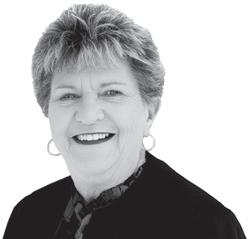
Early in the pandemic, the USC Schaeffer Center for Health Policy & Economics launched a comprehensive collection of information and new research on its website about the implications of the virus on health and the economy. Experts at the center— a partnership of the USC Mann School of Pharmacy and Pharmaceutical Sciences and the USC Price School of Public Policy— continue weighing in on short- and long-term approaches to addressing the impact of COVID-19. Geoffrey Joyce—chair of the Mann School’s Department of Pharmaceutical and Health Economics and Schaeffer Center director of health policy—called attention early on to the danger of shortages posed by supply chains, as the vast majority of raw

RESEARCH IMPACT REPORT 18 USC MANN SCHOOL
Richard Dang
Susan Bain
Geoffrey Joyce
materials that go into prescription drugs are produced overseas, mostly in China and India.

Tackling Testing
With testing reagents in short supply and the high cost of repeatedly testing large portions of the population, Schaeffer Center experts suggested an innovative strategy. Darius Lakdawalla—Quintiles Chair in Pharmaceutical Development and Regulatory Innovation—and colleagues proposed the use of pooled testing. The method combines individual samples and processes them in batches instead of running tests on each individual in a company or school. The team’s analysis showed that this approach could reduce testing costs by at least half, which could add up to tens of billions of dollars saved, even when factoring in concerns about reliability and testing errors.
Deploying Vaccines
Richard Dang led the City of Los Angeles COVID-19 Vaccination Program—a partnership with USC Mann School, Los Angeles Mayor Eric Garcetti, the Los Angeles Fire Department, Carbon Health and Curative. As president of the California Pharmacists Association, he chaired the association’s COVID-19 task force and also served on the California governor’s task force. Under his leadership, the Dodger Stadium vaccination site was the nation’s largest, inoculating more than 1 million people soon after vaccines became available. Dang authored a study on the pharmacists’ role in the implementation and distribution of COVID-19 vaccines for the Journal of Contemporary Pharmacy Practice.
+ MILLION 12
NUMBER OF PEOPLE RECEIVING COVID-19 INOCULATIONS FROM MANN SCHOOL VOLUNTEERS BETWEEN DECEMBER 2020 AND APRIL 2021
THOUSAND
DAILY VACCINATIONS OVERSEEN BY MANN SCHOOL VOLUNTEERS AT DODGER STADIUM, THE NATION’S LARGEST COVID-19 VACCINATION SITE
Our research extends from basic discovery to experimental therapeutics—and all the way to clinical trials and implementation and analysis of impact. We cover the entire spectrum of pharmaceutical discovery and health application.”
1
Annie-Wong Beringer—Associate Dean for Research Affairs
RESEARCH IMPACT REPORT 19 USC MANN SCHOOL
FOSTERING HEALTH EQUITY

From reducing disparities to increasing access to pharmacy care
Eliminating Pharmacy Deserts

Pharmacies are an increasingly important point of care for neighborhoods across the U.S. They not only dispense prescription medications but also offer diagnostic, preventive and emergency services. Lack of access to a convenient pharmacy may be an overlooked contributor to persistent racial and ethnic disparities in the use of prescription medications and essential healthcare services within urban areas.
A study by Hygeia Centennial Chair Dima M. Qato and colleagues demonstrated that Black and Latino neighborhoods in the 30 most populous U.S. cities had fewer pharmacies than white or diverse neighborhoods between 2007 and 2015. The team also found that Black and Latino neighborhoods were more likely to experience pharmacy closures compared with other neighborhoods.
“Our findings suggest that addressing disparities in geographic access to pharmacies— including pharmacy closures—is imperative to improving access to essential medications and other healthcare services in segregated minority neighborhoods,” Qato says.
These efforts could include policies that encourage pharmacies to locate in pharmacy deserts, such as increases to Medicaid and Medicare reimbursement rates for pharmacies most at risk for closure.

RESEARCH IMPACT REPORT 20 USC MANN SCHOOL
Dima Qato
pharmacy desert areas where residents cannot fill a prescription within one mile, 10 miles in rural areas or half a mile for low-income residents without a vehicle
Darius Lakdawalla
Dima Qato coined the term “pharmacy desert” and is working to ensure access to essential medications and healthcare services in lowincome neighborhoods. This map shows rural pharmacy shortage areas across the continental U.S. in 2020. The aqua color highlights rural pharmacy shortage tracts, where the distance to the nearest pharmacy is greater than 10 miles or a half mile for low-income and low vehicleownership rural tracts.
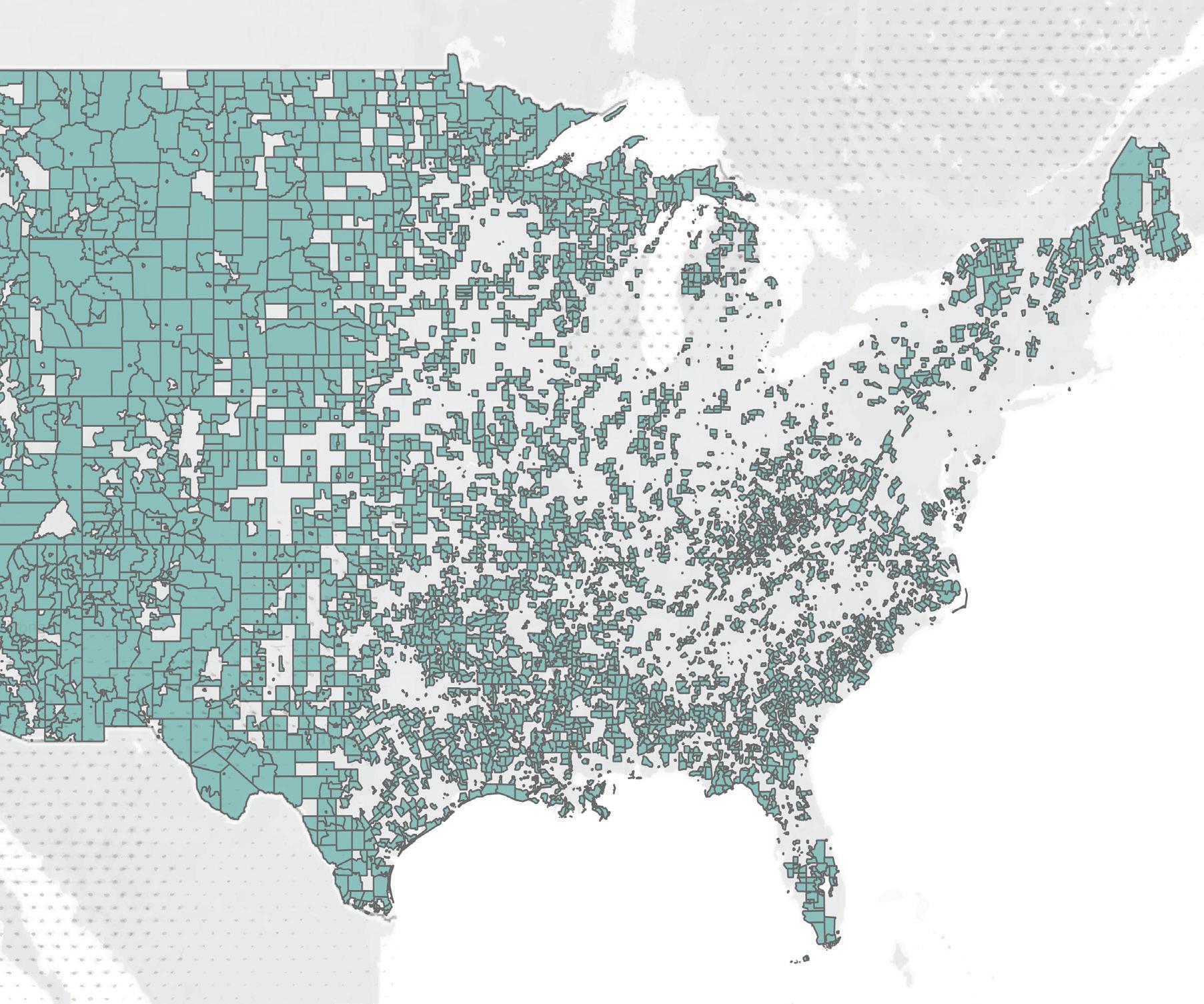
RESEARCH IMPACT REPORT 21 USC MANN SCHOOL
Over $528 billion of avoidable spending occurs each year in the U.S. due to preventable harm or inadequate treatment from medication, accounting for the thirdleading cause of death. Our goal is to ensure that all patients, particularly those in underserved populations, can attain optimal results from medication therapy, leading to healthier and more productive lives.”
Almost one-third of neighborhoods in the largest U.S. cities were pharmacy deserts in 2015, with Black and Latino neighborhoods disproportionately impacted.
26.7 %

OF WHITE OR DIVERSE NEIGHBORHOODS WERE PHARMACY DESERTS
33 %
OF BLACK NEIGHBORHOODS WERE PHARMACY DESERTS
39.5 %
OF LATINO NEIGHBORHOODS WERE PHARMACY DESERTS
Steven Chen—Associate Dean for Clinical Affairs
RESEARCH IMPACT REPORT 22 USC MANN SCHOOL
Reducing Disparities in Cancer Detection


Early cancer detection is crucial to enhancing patient survival rates, yet economic obstacles and cultural attitudes can keep Black and Latino patients from undergoing recommended screenings. A study by Darius Lakdawalla and colleagues addressed the benefits of multi-cancer blood-based tests—which do not require a specialist to administer—while also examining the factors driving disparities in health outcomes. Among those factors are insufficient insurance coverage and a lack of trust in healthcare providers that can stem from the disproportionately lower-quality facilities that serve many minority communities. “The promise of these tests will only be realized if we are able to provide broad access to vulnerable populations,” Lakdawalla says.
Addressing Substance Use Disorders
Drug overdose deaths recently hit a record by surpassing 100,000 in a single year. Preventing such tragedies depends on timely access to medications and educating patients, policymakers and healthcare providers to remove unnecessary and stigmatizing barriers to care. Through his research, David Dadiomov aims to remove these barriers so patients can access addiction treatment just as readily as they can access medications for diabetes.
“Viewing addiction disorders in a different light from other medical conditions can cause real personal and public health harms
and impede access to treatment,” he says. “It will take the work of individuals, healthcare providers and policymakers to ensure we don’t make the treatment harder to access than the substances themselves.”
Cost-Sharing to Fund Hepatitis C Treatment
Untreated hepatitis C can lead to serious and life-threatening health problems like cirrhosis and liver cancer. Direct-acting antiviral therapies introduced in recent years are highly effective, with cure rates above 95%. But, due to state budget constraints, most Medicaid beneficiaries with hepatitis C don’t get these drugs, which cost $20,000 to $30,000. A study by William Padula published in the American Journal of Managed Care found that a Medicaid–Medicare partnership could cover lifesaving medications—and still save up to $1.1 billion over 25 years. Padula and colleagues developed a model to simulate three different pathways for patients going through the care continuum for hepatitis C. The researchers say their model allows states to calculate the costs and savings of a total coverage policy.
Increasing Access to Medications
Dima M. Qato has garnered national coverage for efforts aimed at widening access to medications and improving prescription adherence. Her work—including a partnership with the National Community Pharmacists Association—has influenced federal and state policies aimed at increasing pharmacy access. She also examines the strain that
$ 1.1 BILLION
POTENTIAL SAVINGS OVER 25 YEARS IF A MEDICAID-MEDICARE PARTNERSHIP COVERED LIFESAVING MEDICATIONS FOR HEPATITIS C
polypharmacy—the prescription of multiple drugs for the same conditions—puts on the health of older adults.
Her other collaborations include the World Health Organization, the United States Agency for International Development, Johns Hopkins Bloomberg School of Public Health, Emory University and University of California, Irvine. Within USC, Qato’s research partners include the Institute on Inequalities in Global Health, the Institute for Addiction Science, the Spatial Sciences Institute, the Keck School of Medicine and the Viterbi School of Engineering.
Her research fosters opportunities for building a pipeline of future researchers as well. “Undergraduates and graduate students at the Mann School and across USC have been increasingly involved in data curation and analysis, including pharmacoepidemiologic big data as well as geospatial analyses,” Qato says.
RESEARCH IMPACT REPORT 23 USC MANN SCHOOL
William Padula
David Dadiomov
PROTECTING PATIENTS
From reducing unexpected costs to improving patient outcomes
Reducing Opioid Overdose Risk
While public awareness and efforts to stop addiction and overdoses have intensified, some communities reported higher-thanever rates of opioid-related deaths in 2020. Recent research led by Dima M. Qato reveals that although high-risk prescription opioid use has declined, nearly 1 in 10 adults takes opioids that put them at increased risk of an overdose. “These findings underscore the importance of strengthening the implementation of overdose prevention, particularly naloxone access laws, and harm-reduction strategies,” Qato says.
Qato and colleagues examined a representative 5% sample of anonymized data drawn from individual prescription claims from
Color-enhanced X-ray of the seedpod of an opium poppy (Papaver somniferum). Opioid drugs are obtained from these unripe seedpods. In the body, the drugs bind to opioid receptors on neurons (nerve cells) and block the pathways of pain signals. USC Mann School faculty are working to address the opioid epidemic on multiple levels.

RESEARCH IMPACT REPORT 24 USC MANN SCHOOL
2011 through 2016. The study analyzed use among U.S. adults age 18 and older who filled prescriptions at retail pharmacies.
The research team factored in dangerous co-prescriptions of benzodiazepines, a class of sedatives commonly prescribed for anxiety, seizures or insomnia. Combining opioids with benzodiazepines further increases the risk of overdose and death, the investigators found. More than half of high-risk prescription opioid users received their prescriptions from a single provider. The study detected higher rates of risk among older consumers, who tended to use Medicare for payment. They were also more likely than their younger counterparts to have multiple prescribers and purchase from multiple pharmacies.
Improving Medication Use
Suboptimal medication adherence puts patients at risk and costs our nation’s healthcare system hundreds of billions of dollars annually. Steven Chen—associate dean for Clinical Affairs and the William A. Heeres and Josephine A. Heeres Chair in Community Pharmacy—works to optimize medication use to save lives and eliminate avoidable medical expenses.
His research earned a landmark $12 million grant from the Centers for Medicare & Medicaid Innovation to test the effectiveness of having pharmacists deliver comprehensive medication management as a way to improve adherence, especially in underserved
communities. That work led Chen to establish and lead the influential California Right Meds Collaborative, which engages health plans, pharmacists, health systems and pharmacy schools in advancing sustainable comprehensive medication management services. The results turn patients into partners with pharmacists and physicians to ensure that vital medications are chosen, prescribed and taken for the best results and fewest side effects possible.
Saving Money but Increasing Risk
Although warfarin is the standard treatment for lowering the risk of stroke from atrial fibrillation, non–vitamin K antagonist oral anticoagulants (NOACs) have emerged as a more effective alternative with fewer side effects. NOACs also tend to be more expensive. Research led by Geoffrey Joyce and Seth Seabury finds that the formulary restrictions used by insurers and pharmacy benefit managers to save money result in fewer patients using NOACs or warfarin— which likely leads to poor health outcomes.

The study finds that beneficiaries in Medicare Part D plans with restricted access to NOACs have a lower probability of using the drugs, and those with reduced access show worse medication adherence. In addition, patients in the sample faced longer delays in filling their initial prescription after an atrial fibrillation diagnosis. This all adds up to a higher aggregate risk of death, stroke, transient ischemic attacks or systemic embolism for patients with restricted coverage.
The researchers note that, while formulary restrictions can be appropriate, such policies should be continuously reviewed to ensure that patients have timely access to effective medications.
Improving Safety for Cannabis Users
While many believe that using cannabis, particularly CBD, is perfectly safe, new research by Kari Franson demonstrates that some people are at real risk. She focuses on increasing the understanding of how cannabis affects health and how policy can enhance safety. Her work has revealed that the effects of cannabis on the endocannabinoid system— which regulates numerous bodily functions but produces molecules structurally similar to those of marijuana—increase the risk of mood disorders in certain users.

Easing Anxiety Disorders
Jing Liang recently revealed a connection between Alzheimer’s and stress-induced neuroinflammation of the kind heightened by social isolation during the COVID-19 pandemic. This work suggests that interventions may be able to stave off the disease in its earliest stages. Homing in on astrocytes—cells that regulate brain function—as a probable mechanism in social isolation-induced anxiety, Liang and colleagues, including Daryl Davies, are examining the potential of a compound she developed from the herbal supplement dihydromyricetin (DHM) in restoring the function of astrocytes damaged by stress. They previously demonstrated that

RESEARCH IMPACT REPORT 25 USC MANN SCHOOL
Jing Liang
Seth Seabury
Kari Franson
DHM counteracts the effects of alcohol intoxication and has liver-protective properties. Liang and Davies are refining DHM to enhance its uptake in the bloodstream and improve its clinical effectiveness. Their work also has the potential to help military veterans affected by post-traumatic stress disorder, who face a heightened risk of Alzheimer’s.
Promoting Youth Mental Health
Despite increased public funding and awareness, access to mental healthcare remains limited for many vulnerable groups—especially young people. On average, only one specialized psychiatrist is available for every 10,000 children needing mental health services nationwide. Even when treatments are available, medication safety in children and adolescents remains a public health challenge. Julie Dopheide and Steven Chen contributed to a review paper offering a solution to this shortfall: Add pharmacists
to mental health teams. Their piece for the journal Child and Adolescent Psychiatric Clinics of North America explained the importance of interdisciplinary collaboration between pharmacists and child psychiatrists to achieve better outcomes for patients.
Recognizing the critical need for comprehensive medication management in psychiatric care, Chen adds that numerous states and counties are expanding pharmacists’ roles in the specialty. Policymakers in California, Indiana, Texas and other states have partnered with pharmacists to issue pediatric psychotropic guidelines or practice parameters. The authors bolstered their findings with three case studies illustrating the difference that psychiatric pharmacists and comprehensive medication management made in the lives of patients between ages 10 and 16 with conditions such as schizophrenia, severe depression, attention deficit hyperactivity disorder and autism spectrum disorder.

Taking the Sting out of Surprise Billing
Patients have long suffered financial strain from exorbitant, surprise medical bills stemming from out-of-network care. Collaborative work at the Schaeffer Center and its Schaeffer Initiative for Health Policy—a partnership with Brookings Institution—has informed numerous pieces of legislation at the state and federal levels to protect consumers from this practice, also known as balance billing.
The most sweeping of these is the federal No Surprises Act, which went into effect January 1, 2022. In addition to making it illegal to bill patients for more than innetwork cost-sharing for certain services, the legislation establishes an arbitration process to resolve disputes between providers and insurers. Following the bill’s passage, Schaeffer Center researchers have continued to conduct analyses, examine the best ways to maximize its effectiveness and write recommendations for implementing the new law, many of which were adopted in the administration’s rulemaking.
“The law is a big win for patients, employers and consumers,” Schaeffer Center CoDirector Erin Trish notes.
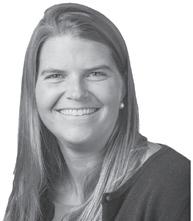
Other recent research by Trish showed that, in just one year, Medicare paid $2.6 billion more for generic medications than the amount spent by cash-paying Costco members for the same drugs. “Policymakers should do what they can to interject transparency and competition to improve incentives,” she says.

RESEARCH IMPACT REPORT 26 USC MANN SCHOOL
pharmacoepidemiology
study of the interactions between drugs and human populations to evaluate outcomes, utilization and safety
Erin Trish
Julie Dopheide
Steven Chen
MEDIA MENTIONS QUOTING SCHAEFFER INITIATIVE ABOUT THE NO SURPRISES ACT
$ 2.6 BILLION EXCESS AMOUNT MEDICARE PAID FOR GENERIC DRUGS OVER COSTCO’S PRICE

At the Schaeffer Center, we conduct rigorous research to inform important health policy questions facing society today. Through evidencebased policy solutions, we aim to measurably improve value in health.”
Erin Trish—Schaeffer Center Co-Director
500+
RESEARCH IMPACT REPORT 27 USC MANN SCHOOL
FACILITATING DISCOVERY
Current and future scientists and scholars deserve the most advanced facilities possible to conduct leading-edge research. The Mann School has made significant recent investments in our laboratory facilities to support the faculty’s growing research portfolio as well as student projects—while also providing a crucial resource for the larger community of scientific experts who partner with the school on vital projects. Multiple core laboratories with state-of-theart equipment suites and teams of skilled
Visual distribution of two different lipids (overlay) in mice brains. The Mann School’s rapifleX Tissuetyper enables MALDI mass spectrometry imaging to advance biomarker discovery and therapeutic development research.

572 USERS OF TRANSLATIONAL RESEARCH LABORATORY IN FY22

RESEARCH IMPACT REPORT 28 USC MANN SCHOOL
research support staff offer unparalleled opportunities for training future researchers. In addition, the USC Schaeffer Center for Health Policy & Economics—a partnership between the USC Mann School and the USC Price School of Public Policy—leverages the data and tools necessary to help answer significant questions in health policy with evidence-based solutions. The school’s resources support investigators across USC’s campuses as well as those from industry and other academic institutions.
Core Laboratory Support
The Translational Research Laboratory features more than 85 highly specialized instruments for applications to analyze molecules, cells, tissues, organs and whole animals. Capabilities include sample processing, cell and immunobiology, flow cytometry, next-generation RNA/DNA sequencing, confocal microscopy and wholemouse imaging.
The Histology Laboratory supports all research needs in histology and pathology— from tissue processing to sectioning and staining. Advanced equipment includes a cryostat for cryogenic temperature control and a microtome for precise sectioning of samples.
The Lentiviral Laboratory provides services related to producing small-scale retrovirus stocks to aid researchers in solving vexing medical mysteries and generating platforms for innovative drug discovery and development.
The Multi-Omics Mass Spectrometry Core offers comprehensive quantitative analytical support in proteomics, metabolomics and lipidomics. Uniquely, the core is the only facility at USC to offer the latest technology in imaging mass spectrometry (IMS), which allows characterization of the molecular signatures of complex mixtures of biomolecules at the cellular level and correlation with histomorphological features from tissues and structural and functional
features from 3D imaging. Knowledge of the molecular content (proteins, peptides, lipids, metabolites, glycans, drugs and their metabolites) will help transform the discovery and validation of tissue biomarkers to improve disease diagnosis, prognosis and evaluation of treatment response. IMS has fast become the industry standard for characterizing drug-delivery methods, tissue distribution, drug screening and efficacy, thus advancing drug discovery and development.
The Medicinal Chemistry Core’s mission is to provide support to all faculty and students’ synthetic organic/medicinal chemistry needs while assisting the larger scientific community. The core offers advanced technology and equipment, including machine-learning software, reaction microwave, combiflash and reverse phase prep purification systems to aid drug design, target validation, and hit-to-lead and lead optimization studies through medicinal chemistry structure-activity relationship.
External Partnerships
Outside o rg anizations
using Mann School core facilities
8BioMed
Ellison Institute for Transformative Medicine
GenVivo Inc.
Kaiser Family Foundation
Mozza Foods
Natural History
Museum of Los
Angeles County
Pelage
Pharmaceuticals
University of Iowa
22 ,503 sq ft WET LABORATORY SPACE
3,533 sq ft
SPACE
RESEARCH IMPACT REPORT 29 USC MANN SCHOOL
CORE FACILITIES AND COMMON USE LAB
COLLABORATING FOR GREATER IMPACT
Research Centers
The Mann School’s mission of innovation includes major research centers, institutes and partnerships that drive discovery and lead the convergence of science, healthcare and policy.

Institute for Addiction Science
Center for Drug Discovery, Delivery and Development
Ginsburg Institute for Biomedical Therapeutics
D. K. Kim International Center for Regulatory Science
Center for Neuronal Longevity
Center for Quantitative Drug and Disease Modeling
Leonard D. Schaeffer Center for Health Policy & Economics
Southern California Clinical and Translational Science Institute
Titus Center for Medication Safety and Population Health
Our alliances across USC include the Keck School of Medicine, Viterbi School of Engineering, Price School of Public Policy, Leonard Davis School of Gerontology, Marshall School of Business, Gould School of Law, and Dornsife College of Letters, Arts and Sciences. However, our research and teaching initiatives extend far beyond campus, with numerous external academic and industry partnerships across the nation and around the world. Frequent local collaborators include Caltech, Cedars-Sinai, City of Hope, Children’s Hospital Los Angeles, Kaiser Permanente School of Medicine, Los Angeles County + USC Medical Center, Keck Hospital of USC and RAND Corporation. Global partnerships extend throughout Asia, Europe, Australia, South America and Africa.
Schaeffer Center for Health Policy & Economics
Advancing Health Policy
Under the leadership of founding Director Dana Goldman and Co-Director Erin Trish, the Schaeffer Center for Health Policy & Economics has received more than $64.5 million in government funding since its inception in 2009. More than $6 million of that amount is from NIH funding through the prestigious Resource Centers for Minority Aging Research (RCMAR). USC-RCMAR supports pilot projects by junior scholars focused on addressing disparities in the health and economic well-being of minority elderly populations with Alzheimer’s disease.
A collaboration between the USC Price School of Public Policy and the USC Mann School, the Schaeffer Center brings together health policy experts, a seasoned pharmacoeconomics team, faculty from across USC—including the Keck School of Medicine, the Dworak-Peck School of Social Work and the Viterbi School of Engineering—and affiliated researchers from other leading universities to solve pressing challenges in healthcare. Policymakers, the public and the media rely on our experts for evidence-based research and analysis of some of the most important topics in healthcare economics and policy today.
Institute for Addiction Science Overcoming Substance Dependence
Our nation faces a crisis of youth e-cigarette addiction, an opioid and overdose epidemic, increasing levels of alcohol abuse, the commercialization of the marijuana industry, and increasing addiction to and reliance on digital devices. Nearly 21 million Americans struggle with substance abuse, while another 17 million suffer from an alcohol use disorder.
To stem the tide of substance and alcohol use disorders, the Mann School is a key partner in the recently established USC Institute for Addiction Science, the nation’s first university-wide, comprehensive, transdisciplinary addiction institute. The institute brings together 80 faculty from
RESEARCH IMPACT REPORT 30 USC MANN SCHOOL
6 EUROPE 4 MIDDLE EAST
8 SOUTH AMERICA
10 colleges and schools—including medicine, social work, psychology, communication, public policy and engineering— and blends research, education, clinical services, public policy and community engagement to reduce addiction and improve the lives of those affected by it.
The Institute for Addiction Science is transforming addiction science to improve lives and free communities from the ravages of substance use and overdoses. By providing an infrastructure to support synergy and collaboration between researchers and educators, the institute is working to advance the science, awareness, prevention and treatment of addiction.
Southern California Clinical and Translational Science Institute and the D. K. Kim International Center for Regulatory Science
Accelerating Clinical Trials
The California Institute for Regenerative Medicine (CIRM) recently awarded $8 million to the Southern California Clinical and Translational Science Institute (CTSI). Launched in 2008 with a $56.8 million NIH award, CTSI helps speed the transformation of basic and clinical research into viable therapies and cures. The Mann School plays a key role in CTSI, a multifaceted resource focused on improving healthcare and outcomes through leading-edge research conducted in partnership with local communities.
The Regulatory Knowledge Support (RKS) Core within the Mann School’s D. K. Kim International Center for Regulatory Science and the Department of Regulatory and Quality Sciences will significantly further the new CIRM grant’s focus on cell and gene therapy clinical trials. Specifically, RKS will provide advice and assistance with FDA filings and support monitoring and auditing of investigator-initiated clinical trials.
The D. K. Kim Center is renowned for training, professional development, research and analysis that fosters regulatory harmonization to improve health globally. The center builds worldwide networks to foster uniform standards for maximum safety and effectiveness of drugs and devices, as well as to encourage greater international cooperation.
Ginsburg Institute for Biomedical Therapeutics
Fostering Boundary-Breaking Discovery
The USC Ginsburg Institute for Biomedical Therapeutics fuses medicine and engineering to develop therapeutic options for debilitating neurosensory disorders that currently have no cure. The interdisciplinary institute unites the Mann School with the Viterbi School of Engineering, Keck School of Medicine, and Dornsife College of Letters, Arts and Sciences to foster boundary-breaking discovery. The institute also bridges the academy and
industry to speed these advances in neural and biomedical engineering to the people who need them. The institute’s inventions include the Argus II retinal implant, which uses electrical stimulation from a computer chip to help blind patients regain some vision.

Center for Drug Discovery, Delivery and Development Speeding Promising New Treatments to Patients
The Center for Drug Discovery, Delivery and Development validates new therapeutic targets identified in the laboratory and translates them into pharmacological breakthroughs. This interdisciplinary center’s diverse team of scientists includes expertise in pharmacology, toxicology, medicinal chemistry, synthetic chemistry, analytical and bioanalytical chemistry, preclinical models of efficacy and toxicology, delivery modes, clinical trials and regulatory science.
Center for Neuronal Longevity Preventing and Treating Neurodegenerative Disease
All neurodegenerative diseases share the common factor of being caused when neurons stop working or die. Currently available therapies slow the progression of some neurodegenerative disorders, but none can prevent, stop or reverse the damage—and many other disorders cannot even be slowed down.
INTERNATIONAL
ASIA
PARTNERSHIPS 31
1 AUSTRALIA
RESEARCH IMPACT REPORT 31 USC MANN SCHOOL
A multidisciplinary team of worldrenowned researchers at the Keck School of Medicine, Mann School of Pharmacy and Pharmaceutical Sciences, and Viterbi School of Engineering are collaborating to pioneer bioengineering technologies for stopping the loss of neuron function so that neurodegenerative diseases of the eye and brain can be treated—and prevented. Building on decades of knowledge, the success of the world’s first FDA-approved retinal implant to restore sight to the blind and USC’s existing investments, the university established the Center for Neuronal Longevity in early 2022.
Using a pioneering approach, the USC researchers are delivering electromagnetic stimulation through a minimally invasive contact lens-like platform to slow, stop or even reverse the damage to nerve cells in the eye. Early preclinical studies have shown surface stimulation of the eye slows progressive blindness. And while their current focus is the eye, the researchers’ long-term goal is to apply the same technologies to alleviate neurodegenerative disorders of the brain, such as Alzheimer’s disease.
Center for Quantitative Drug and Disease Modeling
Enhancing Methodological Innovation
Computing advances enable drug effectiveness and disease progression to be modeled
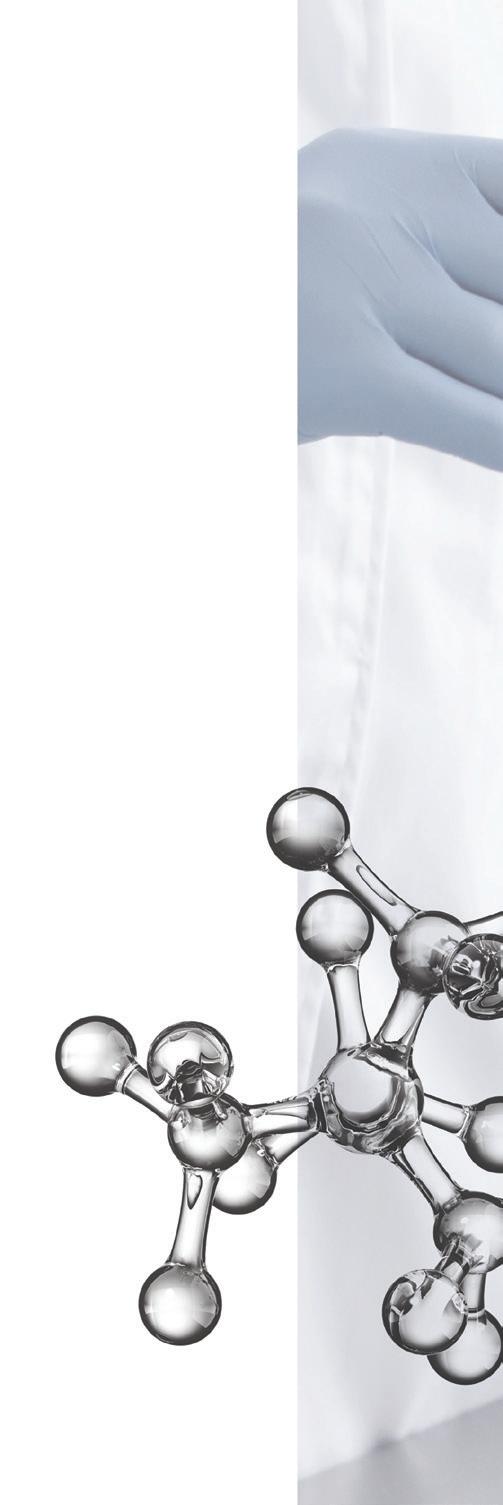
with a predictive accuracy previously thought impossible. Just as quantitative modeling is revolutionizing medicine, the Center for Quantitative Drug and Disease Modeling is shaping how research data is recorded, managed and integrated to enhance the process of therapeutic discovery and development in order to improve population and individual health. The center is also a vital training ground for graduate students and postdoctoral fellows, and an increasingly called-upon international resource, on model-informed drug discovery and development.
Titus Center for Medication Safety and Population Health
Improving Safety in Prescription Medications
Established through a $5 million bequest, the new USC Titus Center for Medication Safety and Population Health aims to reduce hospitalizations and emergency room visits due to medication issues such as lack of adherence or dangerous drug interactions.
“Over $528 billion of avoidable spending occurs each year in the U.S. due to harm or inadequate results from medication, accounting for the third-leading cause of death,” says Steven Chen, associate dean for clinical affairs. “The Titus Center creates opportunities for pharmacists to ensure that all patients, regardless
of socioeconomic status, attain optimal results from medication therapy.”
The Titus Center builds on the school’s foundational work in connecting community pharmacists to patients with persistently uncontrolled chronic diseases such as diabetes, hypertension and asthma. The center also houses the California Right Meds Collaborative, a network of health plans, pharmacies, and academic and professional organizations led by the Mann School. The aim is to advance the pharmacist’s role in achieving healthier patients and communities through comprehensive medication management—the standard of care for assessing every medicine a person uses to ensure appropriateness, effectiveness and safety. The school’s leadership of the initiative is supported by the Los Angeles County Department of Public Health with funding from the Centers for Disease Control and Prevention.
RESEARCH IMPACT REPORT 32 USC MANN SCHOOL

RESEARCH IMPACT REPORT 33 USC MANN SCHOOL
TRAINING THE NEXT GENERATION
Our faculty are passionate about educating and mentoring the next generation of leaders and building a pipeline of diverse new scientists, health economists, clinical researchers and regulatory affairs specialists. These new professionals will in turn bring innovation and new insights to their roles in industry, government, healthcare, higher education and research institutions.
Marquerita Algorri
Marquerita (Rita) Algorri earned her PhD in clinical and experimental therapeutics and MS in regulatory science at the USC Mann School. She served as a graduate research assistant in the laboratory of Associate Dean for Research Affairs Annie Wong-Beringer, where she focused on elucidating the host immune response to Staphylococcus aureus during invasive bloodstream infections. During her tenure at the school, she co-founded and later served as president of Graduate Women in Science. Algorri is now manager of global regulatory affairs (CMC) at Amgen.

Hugo Avila

While pursuing his PhD, Hugo Avila worked full time in the research laboratory of J. Andrew MacKay, associate professor in the Department of Pharmacology and Pharmaceutical Sciences, where he focused on using elastin-like polypeptides to enhance drug delivery to therapeutic targets. Avila attributes his academic success to the support of his family, who provided care for his two children while he worked on the research. That success included an Eli Lilly internship in San Diego that led to his current position at Lilly’s Indianapolis headquarters as an adviser in genetic medicine, working on drug-target development and high-throughput screenings of novel molecules.
Timothy Bensman
484 RESEARCH TRAINEES
Since January 2018, Tim Bensman has been a clinical pharmacology reviewer for the Division of Infectious Disease Pharmacology in the Office of Clinical Pharmacology at the FDA. He earned his PharmD and PhD in clinical and experimental therapeutics and completed a postdoctoral research fellowship in systems pharmacology and pharmacometrics at USC. He has authored numerous journal articles and a book chapter on pharmacokinetics and infectious disease. While a PharmD/PhD student in the laboratory of Paul Beringer, he garnered a two-year fellowship from the NIH for a project on cystic fibrosis.

RESEARCH IMPACT REPORT 34 USC MANN SCHOOL
Melanie Galano
Melanie Galano earned her PhD in molecular pharmacology and toxicology and an MS in regulatory science at USC, where her research included a focus on lipid metabolism and endocrinology. She was the lead author of articles published in the International Journal of Molecular Sciences, Endocrinology and Human Genomics about the role of steroidogenic acute regulatory protein and sterol carrier protein 2 in the transport of cholesterol and other lipids. Galano received the 2021–2022 Charles and Charlotte Krown Fellowship, the top honor awarded to graduate students at the USC Mann School. Her co-curricular activities included joining the USC student chapter of the American Association of Pharmaceutical Scientists and serving as vice chair of the student committee for Diversity, Equity and Inclusion. She was also a founding board member of Parmasya, the school’s Filipino cultural-affinity group. She is now a research scientist at Kite Pharma, a Gilead company.

Joshua Silva

Joshua Silva earned his PhD in clinical and experimental therapeutics and MS in management of drug development from the Mann School. He is manager of medical writing at Pfizer. While working in the laboratory of Daryl Davies studying alcohol use disorders, he co-authored a piece on hangover remedies that was picked up by numerous media, including CNN, PBS NewsHour, Salon and Business Insider. He completed a predoctoral fellowship in pharmaceutical sciences from the American Foundation for Pharmaceutical Education in 2019 and was the recipient of the 2021 USC PhD Achievement Award. While a student, he served as scientific coordinator for the USC Science, Technology and Research (STAR) program to promote diversity in the sciences by mentoring underrepresented high school youth.
Casandra Walker
After earning her PhD in molecular pharmacology and toxicology and MS in regulatory science at USC while working in Martine Culty’s laboratory, Casandra Walker joined Enzyvant as a regulatory affairs specialist in 2022. Her primary research interest is eradicating sickle cell disease—which, despite being considered rare, affects many African Americans and Latinos, including many of her family members and friends. She has also studied patterns of prostate cancer progression and treatment, another research endeavor she has been passionate about since her maternal grandfather died from prostate cancer. Walker founded and serves as CEO of Curls and Careers, a nonprofit to help students of color advance in their education and careers. While at USC, she also headed the Black Pharmacy Society and served on the school’s Diversity Committee.

21.5% UNDERREPRESENTED MINORITY PHD CANDIDATES, 2022–2023

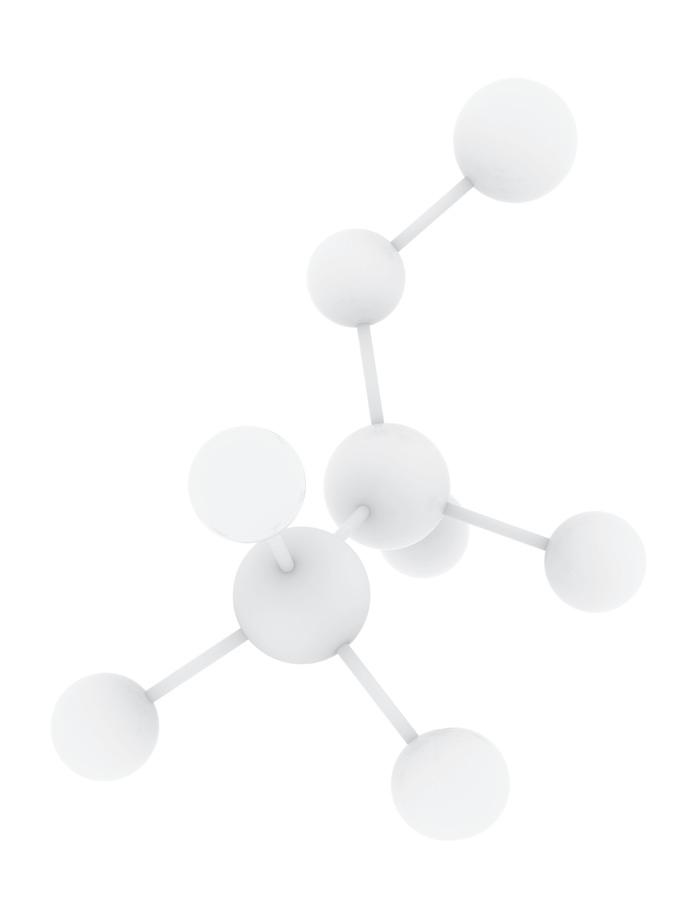
100%
OF HIGH SCHOOL STUDENTS (92% MINORITY) HAVE GONE ON TO COLLEGE AFTER COMPLETING THE MANN SCHOOL-LED SCIENCE, TECHNOLOGY AND RESEARCH (STAR) PROGRAM, WITH 98% ATTENDING TOP-TIER RESEARCH UNIVERSITIES
USC MANN SCHOOL
Scholarly Project
All students in the school’s PharmD program are required to engage in scholarship, individually or as part of a team, by the end of their third year. By learning to apply the process of scientific inquiry—from formulating a research question through data collection, analysis and presentation of results—students not only gain experience that will enhance their future research endeavors, but also learn to become innovative problem-solvers. Each student completes at least 200 hours of fieldwork for the project, which many have called a highlight of their time in the degree program. Findings are presented to a panel of judges that includes faculty members and fourthyear pharmacy students.
Future STARs
The USC Science Technology and Research (STAR) program, based at the Mann School for more than three decades, brings together USC scientists with students at nearby Francisco Bravo Medical Magnet High School. STAR students learn about science and math by conducting research that matters with USC experts. More than 600 high school students have completed the program, with 100% going on to college, including 98% attending top-tier research universities.
Covering the Full Continuum
Intramural Awards
The school is committed to facilitating our faculty success in achieving research excellence and, toward that end, offers a variety of avenues of intramural research funding support. The diversity of skill sets and expertise among faculty within our four departments makes us uniquely qualified to address research topics from a multidisciplinary perspective. To foster interdepartmental collaboration, the school is committed to funding innovative research projects that cross department lines to address a pressing biomedical and healthcare problem, ultimately leading to improving lives.
The school’s Dean’s Summer PharmD Research Fellowship Program provides learning and networking opportunities for USC PharmD students. The program is aimed at students committed to pursuing either professional or academic research careers across the entire pharmaceutical continuum—including drug discovery, delivery, mechanisms of disease and drug action, clinical and translational studies, data science/bioinformatics, regulatory science, health outcomes, economic analysis and policy development.
Wave of Opportunity
The school’s paid Summer Undergraduate Research Fellowships (SURF) increase learning and networking opportunities for non-USC students primarily from underrepresented minority groups who are committed to pursuing either professional or academic research careers across the entire pharmaceutical continuum. Students develop confidence and independence in conducting and presenting research and communicating scientific concepts under the guidance of faculty and other mentors.
Training New Generations
Through the USC Dornsife College of Letters, Arts and Sciences’ Bridge Undergraduate
Science Program (BUGS) and BUGS Jr. for high school students, aspiring scientists learn to better understand the human body, molecule by molecule. The paid summer research program offers students the opportunity to work under the guidance of Mann School faculty as they gain hands-on experience in a collaborative research environment and contribute to improving the human condition.
Building Research Skills
The Undergraduate Research Associates Program, administered through the USC Office of Undergraduate Programs, provides resources that enable faculty to integrate undergraduates into their scholarly and professional activities. Many Mann School faculty members sponsor undergraduates in this distinctive program, which makes students important junior partners on the research team.
Jump-Starting a PhD
Through the Diversity, Inclusion, Access JumpStart Program, USC invites diverse candidates from outside institutions to apply for 10-week summer research opportunities in various PhD disciplines. This serves as a pathway for underrepresented minority groups to PhD programs by providing academic and financial support as well as professional development opportunities for rising juniors and seniors.
RESEARCH IMPACT REPORT 36 USC MANN SCHOOL
NIH-Funded Pilot and Training Opportunities

» Rising STARS (Scientific Training in Alcohol Research and Other Substances)
USC received a $1.3 million, five-year training grant from the National Institute on Drug Abuse to create a first-of-its-kind program to enhance diversity in the next generation of addiction scientists. This innovative, transdisciplinary program will train undergraduate students from underrepresented minority groups in the fields of alcohol and substance use disorders. The program is led by Daryl Davies, associate dean of undergraduate education at the Mann School. The program will collaborate with neighboring California State University, Los Angeles and Charles R. Drew University of Medicine and Science—which collectively represent one of the largest pools of talented underrepresented minority students in the U.S. Rising STARS scholars will have the opportunity to train in preclinical, human laboratory, clinical, public health and policy approaches at USC under the direction of faculty mentors from a breadth of disciplines. After completing the program, scholars are eligible for guaranteed interviews, select slots of PhD entry and application-fee waivers at USC graduate schools.
» USC Alzheimer’s Disease Resource Center for Minority Aging and Health Economics Research
Aiming to increase the number, diversity and academic success of junior faculty who focus their research on the health and economic well-being of minority elderly populations, the USC Alzheimer’s Disease Resource Center for Minority Aging and Health Economics Research has cultivated 27 early-career scholars since its launch in 2012. The center is funded through a grant from the National Institute on Aging with additional support from the USC Office of the Provost, Price School of Public Policy and Mann School. Dana Goldman serves as co-director.
» USC Center for Advancing Sociodemographic and Economic Study of Alzheimer’s Disease and Related Dementias
An interdisciplinary research center established through a partnership with the Schaeffer Center, the University of Texas at Austin Population Research Center and Stanford Health Policy, the USC Center for Advancing Sociodemographic and Economic Study of Alzheimer’s Disease and Related Dementias (CeASES-ADRD) works to advance innovative social science research in Alzheimer’s disease and
In an unprecedented achievement, five USC Mann School PhD students received American Foundation for Pharmaceutical Education (AFPE) Pre-Doctoral Fellowships in Pharmaceutical Sciences in the same year. USC is the only pharmacy school to garner five such awards in one year, according to AFPE.
related dementias, increase and diversify the number of researchers working in the field, and disseminate findings for impact. Funded through the NIH, this mission is accomplished through network meetings, workshops, pilot project support and the annual Science of ADRD for Social Scientists Program. Dana Goldman serves on the executive committee.
» USC Roybal Center for Behavioral Interventions in Aging
By developing and testing interventions based on insights from behavioral science to promote healthy aging, the USC Roybal Center for Behavioral Interventions in Aging aims to strengthen the ability of clinicians to recommend the safest, most effective treatments for patients. The center conducts research that advances healthy aging for older adults who are economically insecure, culturally diverse and underserved by human services organizations. It funds pilot projects proposed by senior and junior researchers from academic and research institutions focused on the consequences of current patterns of practice and the development of interventions that will improve care delivery, quality of care and value to aging adults. Dana Goldman is co-principal investigator.
Select Trainee Publications
Students and residents at the Mann School are encouraged and mentored to publish their work in top academic journals and present their findings at major conferences. Following are a few examples of trainees who have served as lead authors on research publications.
Fatimah Alhurayri, MS Student
Alhurayri, F., E. Porter, R. Douglas-Louis, E. Minejima, J. Bubeck Wardenburg and A. Wong-Beringer. (2021). Increased Risk of Thrombocytopenia and Death in Patients With Bacteremia
Caused by High Alpha ToxinProducing MethicillinResistant Staphylococcus aureus. Toxins, 13: 726.
A. J. Al Omran, PhD Student
Al Omran, A. J., A. S. Shao … D. L. Davies, X. M. Shao and J. Liang. (2022). Social Isolation Induces Neuroin-
flammation and Microglia Overactivation, While Dihydromyricetin Prevents and Improves Them. Journal of Neuroinflammation, 19 (1): 2.
Hugo Avila, PhD Student
Avila, H. … and J. A. MacKay. (2022). HydraElastin-Like Polypeptides Increase Rapamycin Potency When Targeting Cell Surface GRP78. Biomacromolecules, 23 (8): 3116-29.

Brandon Ebright, PhD Student
Ebright, B., I. Assante, S. Louie et al. (2022). Eicosanoid Lipidome Activation in Post-Mortem Brain Tissues of Individuals With APOE4 and Alzheimer’s Dementia. Alzheimer’s Research Therapy, 14 (1): 152.
Melanie Galano, PhD Student
Galano, M., Y. Li, L. Li, C. Sottas and V. Papadopoulos. (2021).
Role of Constitutive STAR in Leydig Cells. International Journal of Molecular Sciences, 22 (4).
Galano, M., S. Ezzat and V. Papadopoulos. (2022). SCP2 Variant Is Associated With Alterations in Lipid Metabolism, Brainstem Neurodegeneration and Testicular Defects. Human Genomics, 16: 32.
Eunjin Hong, PhD Student
Hong, E., L. M. Almond, P. S. Chung, A. P. Rao and P. M. Beringer. (2022). Physiologically Based PharmacolineticLed Guidance for Patients With Cystic Fibrosis Taking Elexacaftor-TezacaftorIvacaftor With NirmatrelvirRitonavir for the Treatment of COVID-19. Clinical Pharmacology and Therapeutics, 111: 1324-33.
Diana Jo, PharmD, PGY2 Infectious Diseases Resident Jo, D., A. Sophonsri, P. Ny, M. Lou, P. Nieberg, K. Shriner and A. Wong-Beringer.
(2022). Unvaccinated Nonelderly Adult Population Hospitalized for COVID-19: Risk for Severe Disease and Poor Outcomes. Journal of Primary Care Community Health, 13.
Michelle Kalu, PharmD, PhD Student
Kalu, M., K. Tan, R. Algorri, P. Jorth and A. WongBeringer. (2022). In-Human Multiyear Evolution of Carbapenem-Resistant Klebsiella pneumoniae Causing Chronic Colonization and Intermittent Urinary Tract Infections: A Case Study. mSphere, 7 (3): e0019022.
Christian Rabot, PhD Student
Rabot, C., Y. Chen, S. Bijlani, Y. M. Chiang, C. E. Oakley, B. R. Oakley, T. J. Williams and C. C. C. Wang. (2022). Conversion of Polyethylenes Into Fungal Secondary Metabolites. Angewandte Chemie (International ed. in English), e202214609.

RESEARCH IMPACT REPORT 38 USC MANN SCHOOL
Anthony Sophonsri, PharmD, Clinical Translational Research Fellow
Sophonsri, A., D. Le, M. Lou, P. Ny, E. Minejima … and A. Wong-Beringer. (2022). Temporal Dynamics of Host Immune Response Predictive of Disease Severity and Progression in Patients Hospitalized for COVID-19 Pneumonia. Critical Care Explorations, 4 (9): e0760.
Saki Watanabe, PhD Student
Watanabe, S. … D. L. Davies, X. M. Shao, J. Watanabe and J. Liang. (2022). Dihydromyricetin Improves Social IsolationInduced Cognitive Impairments and Astrocytic Changes in Mice. Scientific Reports, 12 (1): 5899.
Degree Programs
Clinical Pharmacy
Doctor of Pharmacy
Graduate Certificate in Advanced Pharmacy Practice
Regulatory and Qualitative Sciences
Doctorate in Regulatory Science
MS in Management of Drug Development
MS in Medical Product Quality
MS in Regulatory Management
MS in Regulatory Science
Graduate Certificate in Clinical Research Design and Management
Graduate Certificate in Food Safety
Graduate Certificate in Medical Product Quality
Graduate Certificate in Patient and Product Safety
Graduate Certificate in Preclinical Drug Development
Graduate Certificate in Regulatory and Clinical Affairs
Pharmaceutical and Health Economics
PhD in Health Economics
MS in Biopharmaceutical Marketing
MS in Healthcare Decision Analysis
MS in Pharmaceutical Economics and Policy
Progressive MS in Biopharmaceutical Marketing

Progressive MS in Healthcare Decision Analysis
Graduate Certificate in Healthcare Decision Analysis
Pharmaceutical and Translational Sciences
PhD Clinical and Experimental Therapeutics
PhD Molecular Pharmacology and Toxicology
PhD Pharmaceutical Sciences

MS in Clinical and Experimental Therapeutics
MS in Molecular Pharmacology and Toxicology
MS in Pharmaceutical Sciences
Undergraduate Programs
BA in Biopharmaceutical Sciences
BS in Biopharmaceutical Sciences
BA in Pharmacology and Drug Development
BS in Pharmacology and Drug Development
Minor in Biopharmaceutical Business
Minor in Foundation in Regulatory Sciences
Minor in Science and Management of Biomedical Therapeutics
Joint Degree Program
MS of Addiction Science
RESEARCH IMPACT REPORT 39 USC MANN SCHOOL
DISSEMINATING RESEARCH INSIGHTS
The following list of select publications highlights some of the most recent research conducted by faculty in the Mann School.
Select Faculty Publications
Alhurayri, F., E. Porter, R. Douglas-Louis, E. Minejima, J. Bubeck Wardenburg and A. Wong-Beringer. (2021). Increased Risk of Thrombocytopenia and Death in Patients With Bacteremia Caused by High Alpha ToxinProducing Methicillin-Resistant Staphylococcus aureus. Toxins, 13: 726.
Alzubaidi, H., F. Jassim Jirjees, K. L. Franson et al. (2021). A Global Assessment of Distance Pharmacy Education Amid COVID-19: Teaching, Assessment and Experiential Training. International Journal of Pharmacy Practice, 29 (6): 633-41.
Crane, M. A., R. R. Faden and J. A. Romley. (2021). Disparities in County COVID-19 Vaccination Rates Linked to Disadvantage and Hesitancy. Health Affairs, 40 (11): 1792-96.
Crutcher, M., and P. Seidler (2021). Maximizing Completion of the Two-Dose COVID-19 Vaccine Series With Aid From Infographics. Vaccines, 9 (11): 1229.
Chen, K., T. Palagashvili, W. Hsu, Y. Chen, B. Tabakoff, F. Hong, A. T. Shih and J. C. Shih. (2022). Brain Injury and Inflammation Genes Common to a Number of Neurological Diseases and the Gene Involved in the Genesis of
GABAnergic Neurons Are Altered in Monoamine Oxidase B Knockout Mice. Brain Research, 1774: 147724.
Chen, C. …, D. Goldman … and J. Zissimopoulos. (2021). Gender Differences in Countries’ Adaptation to Societal Ageing: An International Cross-Sectional Comparison. The Lancet Healthy Longevity, 2 (8): e460-69.
Cheng, Q. …, Y. Wang, T. Hou and Y. Zhang. (2021). Expanding the Toolbox of Exosome-Based Modulators of Cell Functions. Biomaterials, 277: 121129.
Duffy, E. L., L. Adler, B. L. Chartock and E. Trish (2022). Dispute Resolution Outcomes for Surprise Bills in Texas. JAMA, 327 (23): 2350-51.
Feng, Q., Y. Lian, Y. Qian and J. Shih. (2021). Near-Infrared MAO A Inhibitor (NMI) Outperformed FDA-Approved Chemotherapeutic Agents in Brain and Other Cancers: A Bioinformatic Analysis of NCI60 Screening Data. Brain Sciences, 11 (10): 1318.
Ganesan, R. …, P. M. Beringer and J. A. Camarero. (2021). Engineered Cyclotides With Potent Broad in Vitro and in Vivo Antimicrobial Activity. Chemistry: A European Journal, 27 (49): 12450.
Gross, M. E., D. B. Agus, T. B. Dorff … and J. Shih. (2021). Phase 2 Trial of Monoamine Oxidase Inhibitor Phenelzine in Biochemical Recurrent Prostate Cancer. Prostate Cancer and Prostatic Diseases, 24: 61-68.
Guadamuz, J. S., R. A. Durazo-Arvizu, J. F. Morales and D. M. Qato. (2022). Citizenship Status and Mortality Among Young Latino Adults in the U.S., 1998-2015. American Journal of Preventive Medicine, 62 (5): 777-81.
Hong, E., L. M. Almond, P. S. Chung, A. P. Rao and P. M. Beringer. (2022). PBPK-Led Guidance for Cystic Fibrosis Patients Taking
Elexacaftor-Tezacaftor-Ivacaftor With Nirmatrelvir-Ritonavir for the Treatment of COVID-19. Clinical Pharmacology & Therapeutics, 111 (6): 1324-33.
Heun-Johnson, H., K. V. Zuluaga, M. Menchine, S. Seabury et al. (2022). Assessing the Use of Data Systems to Estimate Return-onInvestment of Behavioral Healthcare Interventions: Opportunities and Barriers. Journal of Behavioral Health Services & Research.
Jo, D., A. Sophonsri, P. Ny, M. Lou, P. Nieberg, K. Shriner and A. Wong-Beringer. (2022). Unvaccinated Non-elderly Adult Population Hospitalized for COVID-19: Risk for Severe Disease and Poor Outcomes. Journal of Primary Care Community Health, 13.
Joyce, G., P. Ferido, J. Thunell, B. Tysinger and J. Zissimopoulos. (2022). Benzodiazepine Use and the Risk of Dementia. Translational Research & Clinical Interventions, 8 (1): e12309.
Kelley, M., J. Lucas, E. Stewart, D. Goldman and J. N. Doctor. (2021). Opioid-Related Deaths Before and After COVID-19 Stay-at-Home Orders in Los Angeles County. Drug and Alcohol Dependence, 228: 109028.
Kim, R. E., N. Morningstar-Kywi and I. S. Haworth. (2021). Integration of Clinical and Scientific Principles in the Teaching of DrugDrug Interactions. Medical Science Educator, 31 (6): 2169-76.
Kung, P.-P., C. Fan, H. J. Gukasyan et al. (2021). Design and Characterization of a PyridoneContaining EZH2 Inhibitor Phosphate Prodrug. Journal of Medicinal Chemistry, 64 (3): 1725-32.
Lakdawalla, D. N., and C. E. Phelps. (2022). A Guide to Extending and Implementing Generalized Risk-Adjusted Cost-Effectiveness (GRACE). European Journal of Health Economics, 23 (3): 433-51.
RESEARCH IMPACT REPORT 40 USC MANN SCHOOL
Li, Y., L. Chen, L. Li … M. Culty, B. Stiles and V. Papadopoulos. (2021). CholesterolBinding Translocator Protein (18 kDa) Regulates Hepatic Steatosis and Bile Acid Synthesis in Non-alcoholic Fatty Liver Disease. iScience, 24 (5): 102457.
Loeb, G. E., and F. Richmond. (2021). Turning Neural Prosthetics Into Viable Products. Frontiers in Robotics and AI, 8.
Lu, L., and V. Papadopoulos. (2021). Advances in Stem Cell Research for the Treatment of Primary Hypogonadism. Nature Reviews Urology, 18: 487-507.
McCormick, C. D., D. Dadiomov, R. Trotzky-Sirr and D. M. Qato. (2021). Prevalence and Distribution of High-Risk Prescription Opioid Use in the United States, 2011-2016. Pharmacoepidemiology and Drug Safety, 30 (11): 1532-40.
Mehndiratta, S., B. Qian, J.-Y. Chuang, J.-P. Liou and J. C. Shih. (2022). N-MethylpropargylamineConjugated Hydroxamic Acids as Dual Inhibitors of Monoamine Oxidase A and Histone Deacetylase for Glioma Treatment. Journal of Medicinal Chemistry, 65 (3): 2208-24.
Minejima, E., J. Wang, S. Boettcher, L. Liu, M. Lou, R.C. She, S. L. Wenzel, B. Spellberg and A. Wong-Beringer. (2021). Distance Between Home and the Admitting Hospital and Its Effect on Survival of Low Socioeconomic Status Population with Staphylococcus aureus Bacteremia. Public Health Reports, 137 (1): 110-19.
Mirzaian, E., and K. L. Franson. (2021). Leading a Digital Transformation in Pharmacy Education With a Pandemic as the Accelerant. Pharmacy, 9 (1): 19.
Nuffer, W., J. Bolan … K. Franson et al. (2021). A Longitudinal Quality Improvement Program to Optimize Experiential Education’s Ability to Develop Trusted Independent Pharmacist
Practitioners. Currents in Pharmacy Teaching and Learning, 13 (9): 1244-51.
Okada, A. K. …, I. S. Haworth and R. Langen. (2021). Lysine Acetylation Regulates the Interaction Between Proteins and Membranes. Nature Communications, 12: 6466.
Padula, W. V., S. Malaviya, N. M. Reid et al. (2021). Economic Value of Vaccines to Address the COVID-19 Pandemic: A US Cost-Effectiveness and Budget Impact Analysis. Journal of Medical Economics, 24 (1): 1060-69.
Padula, W. V., M. A. Miano, M. A. Kelley et al. (2022). A Cost-Utility Analysis of Remote Pulse-Oximetry Monitoring of Patients With COVID-2019. Value in Health, 25 (6): 890-96.
Papadopoulos, V., D. Goldman, C. Wang, M. Keller and S. Chen. (2021). Looking Ahead to 2030: Survey of Evolving Needs in Pharmacy Education. Pharmacy, 9 (1): 59.
Peckham, A. M., J. Ball, M. D. Colvard, D. Dadiomov et al. (2021). Leveraging Pharmacists to Maintain and Extend Buprenorphine Supply for Opioid Use Disorder Amid COVID-19 Pandemic. American Journal of Health-System Pharmacy, 78 (7): 613-18.
Reddy, P. K. V. …, T. M. H. Ng and U. Elkayam. (2021). Characteristics of MethamphetamineAssociated Cardiomyopathy and the Impact of Methamphetamine Use on Cardiac Dysfunction. American Journal of Cardiology, 154: 86-91
Reif, J., H. Heun-Johnson, B. Tysinger and D. Lakdawalla. (2021). Measuring the COVID-19 Mortality Burden in the United States: A Microsimulation Study. Annals of Internal Medicine, 174 (12): 1700-9.
Rabot, C., Y. Chen, S. Bijlani, Y. M. Chiang, C. E. Oakley, B. R. Oakley, T. J. Williams and C. C. C. Wang. (2022). Conversion of Polyethylenes Into
Fungal Secondary Metabolites. Angewandte Chemie (International ed. in English), e202214609.
Sophonsri, A., D. Le, M. Lou, P. Ny, E. Minejima, A. B. Chambliss, P. Nieberg, K. Shriner and A. Wong-Beringer. (2022). Temporal Dynamics of Host Immune Response Predictive of Disease Severity and Progression in Patients Hospitalized for COVID-19 Pneumonia. Critical Care Explorations, 4 (9): e0760.
Tan, K., E. Minejima, M. Lou, W. J. Mack, P. Nieberg and A. Wong-Beringer. (2021). Cytokine Measurements Add Value to Clinical Variables in Predicting Outcomes for Staphylococcus aureus Bacteremia. BMC Infectious Diseases, 21: 1-13.
Tran-Guzman, A., R. Moradian, H. Cui and M. Culty. (2022). In Vitro Impact of Genistein and Mono(2-ethylhexyl) Phthalate (MEHP) on the Eicosanoid Pathway in Spermatogonial Stem Cells. Reproductive Toxicology, 107: 150-65.
Wang, G., H. Truong and R. Dang. (2021). Impact of a Pharmacist-Led Hypertension Management Program for Oral Chemotherapy in a Specialty Pharmacy Setting. Journal of Oncology Pharmacy Practice, 29 (1): 52-59.
Wu, M. …, Y. Wang and I. S. Haworth. (2021). Using Technology to Automate Syllabus Construction for Programmatic, Curricular, Faculty and Experiential Assessment Activities. International Journal of Educational Management, 36 (1): 49-62.
Zhang, M., K. Li, J. Bai … and Z. Lu. (2021). Optimized Photochemistry Enables Analysis of Dynamic RNA Structuromes and Interactomes in Genetic and Infectious Disease. Nature Communications, 12 (2344).
RESEARCH IMPACT REPORT 41 USC MANN SCHOOL
SUPPORTING OUR WORK
To advance scientific knowledge and fuel new breakthroughs, the Mann School garners major grants from government and industry funders as well as private donors. We gratefully acknowledge the following supporters.
Foundations
American Foundation for Pharmaceutical Education
Cancer Center Disease Affinity Group
Cystic Fibrosis Foundation
Bill and Melinda Gates Foundation
Ming Hsieh Institute
Sutter Health
Government
Centers for Disease Control and Prevention (subcontracts)
Department of Defense
Los Angeles County
National Academy of Sciences
National Cancer Institute
National Institutes of Health
• National Institute on Aging
• National Institute of Biomedical Imaging and Bioengineering
• National Institute of Diabetes and Digestive and Kidney Diseases
• National Institute on Drug Abuse
• National Institute of General Medical Sciences
National Science Foundation
Industry
Arnold Ventures
Bristol Myers Squibb
Lutronic Vision
MeMed Diagnostics
Merck & Co.
Paratek Pharmaceuticals
Endowed Chairs and Professorships
John A. Biles Professor of Pharmaceutical Sciences
Julio Camarero, PhD, Professor, Pharmacology and Pharmaceutical Sciences
Timothy M. Chan Professor of Complementary Therapeutics
Daryl Davies, PhD, Associate Dean for Undergraduate Education and Professor, Titus Family Department of Clinical Pharmacy
William A. Heeres and Josephine A. Heeres Chair in Community Pharmacy
Steven Chen, PharmD, Associate Dean for Clinical Affairs and Professor, Titus Family Department of Clinical Pharmacy
Gavin S. Herbert Professor of Pharmaceutical Sciences
J. Andrew MacKay, PhD, Associate Professor, Pharmacology and Pharmaceutical Sciences
Hygeia Centennial Chair in Clinical Pharmacy
Dima M. Qato, PharmD, MPH, PhD, Associate Professor, Titus Family Department of Clinical Pharmacy
Charles Krown Pharmacy Alumni Professor of Pharmaceutical Sciences
Enrique Cadenas, PhD, Professor, Pharmacology and Pharmaceutical Sciences
Litvack Family Chair to Discover the Consequences of Aging
Being recruited
QSAD Centurion Professor of Pharmaceutical Sciences
Being recruited
Quintiles Chair in Pharmaceutical and Regulatory Innovation

Darius Lakdawalla, PhD, Professor, Pharmaceutical and Health Economics
John Stauffer Dean’s Chair in Pharmaceutical Sciences
Dean Vassilios Papadopoulos, DPharm, PhD, DSc (hon)
Susie Titus Professorship in Medication Safety
Being recruited
Boyd P. and Elsie D. Welin Professor of Pharmaceutical Sciences
Jean Chen Shih, PhD, University Professor, Pharmacology and Pharmaceutical Sciences
RESEARCH IMPACT REPORT 42 USC MANN SCHOOL
About Alfred E. Mann
Originally founded in 1905 as the USC College of Pharmacy, our school was known as the USC School of Pharmacy from the mid-20th century until 2022, when the school received a $50 million endowment and was renamed for the late inventor and entrepreneur Alfred E. Mann. The gift is the largest naming donation ever made to a pharmacy school in California and one of the largest to any pharmacy school in the country.
A physicist by training and a humanitarian by inclination, Mann founded 17 companies that not only redefined biotechnology but also reached to the stars through early work in the aerospace industry. The advancements he made possible have saved and improved countless lives around the world. His visionary legacy includes easily rechargeable pacemakers, wearable insulin pumps and inhalable insulin, cochlear implants, mind-controlled prosthetic limbs, and microstimulators that alleviate pain and restore lost limb function.
Recognizing USC’s commitment to a healthier and more just world, Mann became a longtime partner of our university. In addition to serving as a trustee, his prior support included more than $174 million to advance such initiatives as the Alfred E. Mann Institute for Biomedical Engineering—the groundbreaking creations of which include the first artificial retina approved by the FDA.
Mann dedicated his life to meeting intractable challenges to human health with innovative solutions—just as our researchers do at the school that now bears his name. This tradition will continue in perpetuity at the USC Mann School of Pharmacy and Pharmaceutical Sciences, as those we train develop breakthrough discoveries in the generations ahead.
About the USC Mann School
One of the top pharmacy schools nationwide and the highest-ranked private school in the field, the USC Mann School of Pharmacy and Pharmaceutical Sciences continues our century-old reputation for innovative programming, practice and collaboration.
The school created the nation’s first Doctor of Pharmacy program, the first clinical pharmacy program, the first clinical clerkships, the first doctorates in pharmaceutical economics and regulatory science, the first PharmD/MBA dual-degree program and the first undergraduate degree in biopharmaceutical business, among other innovations in education, research and practice. The USC Mann School is the only private pharmacy school on a major health sciences campus, which facilitates partnerships with other health professionals as well as new breakthroughs in care. We own and operate five pharmacies.
The school is home to the D. K. Kim International Center for Regulatory Science at USC, the Titus Center for Medication Safety and Population Health, and the Center for Quantitative Drug and Disease Modeling, and is a partner in the USC Leonard D. Schaeffer Center for Health Policy & Economics, the USC Institute for Addiction Science, the USC Ginsburg Institute for Biomedical Therapeutics, the Southern California Clinical and Translational Science Institute, and the USC Center for Drug Discovery, Delivery and Development.
We pioneered a national model of clinical pharmacy care through work in safety-net clinics throughout Southern California and are a leader in comprehensive medication management. The Mann School is distinguished by our focus on encouraging innovation, building new research portfolios, increasing diversity and preparing students for the careers of tomorrow.

DESIGN BY STUDIODELUXE, LOS ANGELES
USC Mann School of Pharmacy and Pharmaceutical Sciences

Health Sciences Campus
University of Southern California
1985 Zonal Avenue
Los Angeles, CA 90089-9121













































































